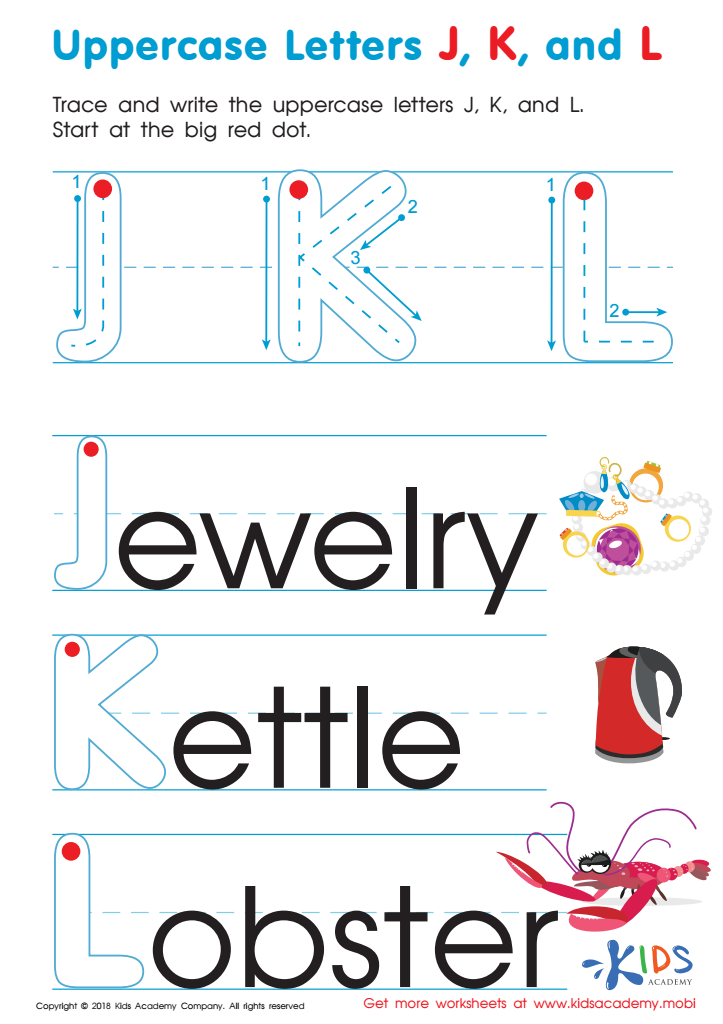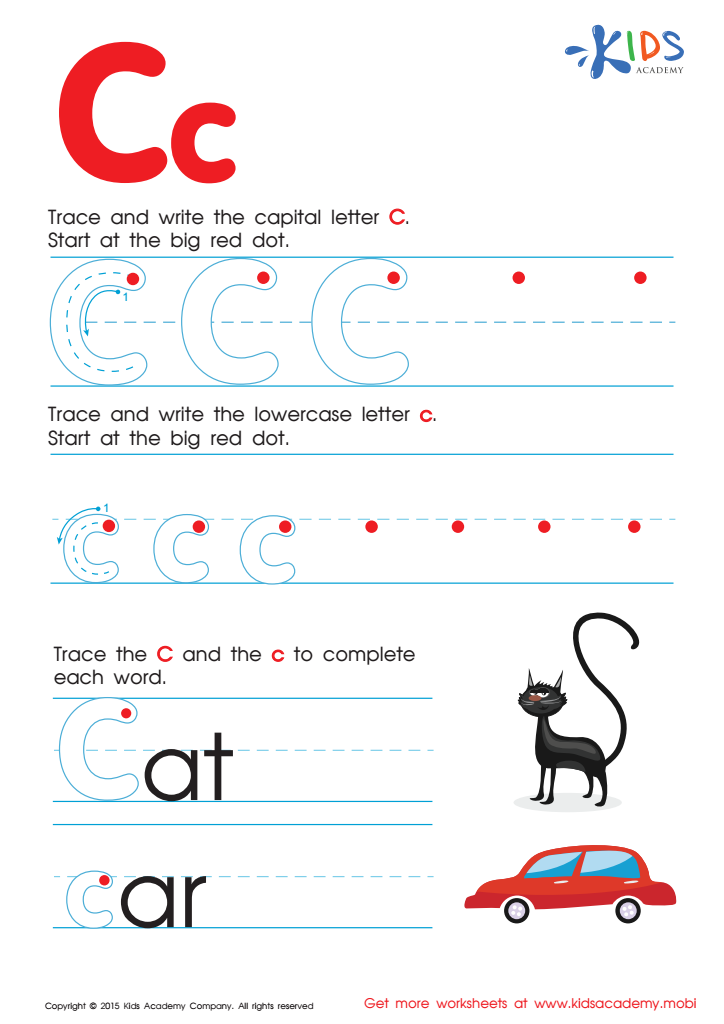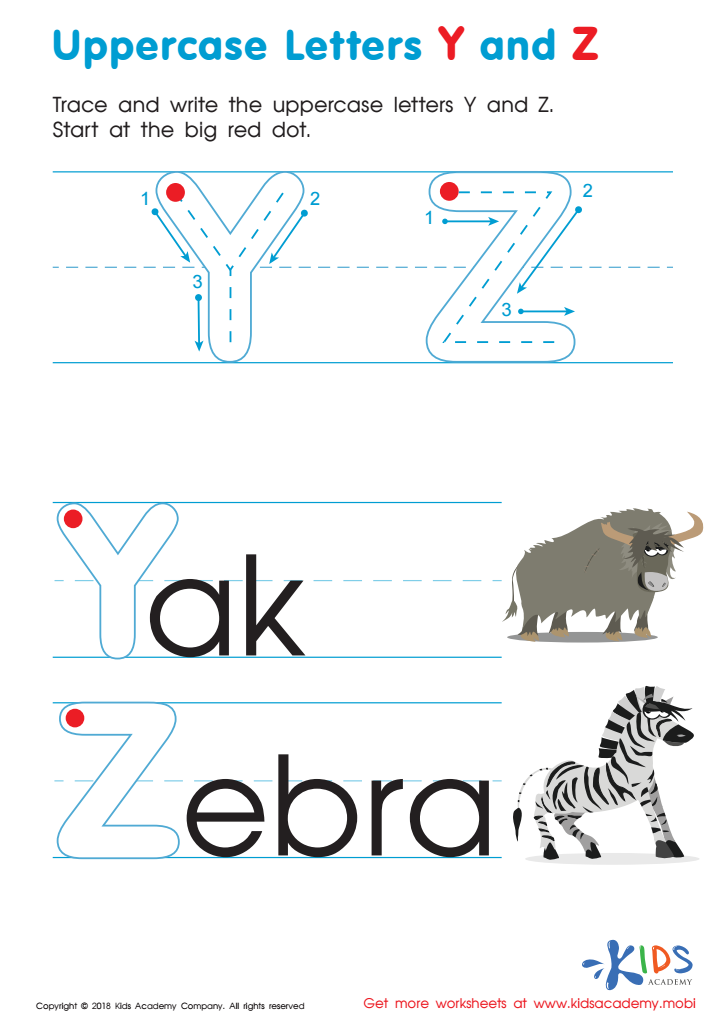Letter tracing skills Tracing Letters Worksheets for Ages 4-9
3 filtered results
-
From - To
Enhance your child's letter tracing skills with our engaging tracing letters worksheets designed for ages 4-9. These printable worksheets offer a fun and interactive way to teach young learners the shapes and forms of each letter in the alphabet. With guided tracing exercises, children improve their fine motor skills, hand-eye coordination, and letter recognition. Our variety of colorful and themed worksheets ensures that learning remains enjoyable and motivated. Ideal for both classroom and home use, these resources support early literacy development and pave the way for confident writing. Start your child's journey to writing success today!


Uppercase Letters J, K, and L Worksheet


Letter C Tracing Page


Uppercase Letters Y Z Worksheet
Letter tracing skills play a crucial role in early childhood development, making it essential for parents and teachers to prioritize this activity for children aged 4-9. Firstly, tracing letters helps young learners develop fine motor skills, which are foundational for handwriting. As children practice, they strengthen the small muscles in their hands, improving dexterity and coordination, vital for everyday tasks.
Secondly, letter tracing enhances cognitive development by reinforcing letter recognition and phonemic awareness. As students trace letters, they learn to associate each symbol with its corresponding sound, facilitating early reading skills. This connection between tactile movement and visual recognition creates a more robust learning experience.
Additionally, engaging in letter tracing helps children develop focus and concentration. The act of tracing requires attention to detail, encouraging mindfulness that can be beneficial in other academic areas.
Furthermore, letter tracing can foster self-esteem and a sense of accomplishment as children see their progress over time. For parents and teachers, supporting this skill not only nurtures a child's academic abilities but also promotes a love for learning during these formative years, paving the way for future success in literacy and other disciplines.
 Assign to My Students
Assign to My Students




















